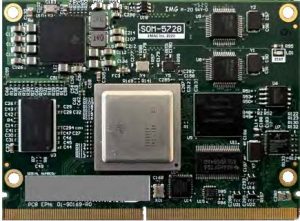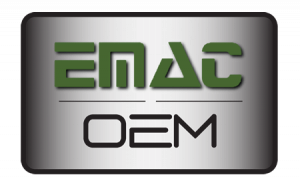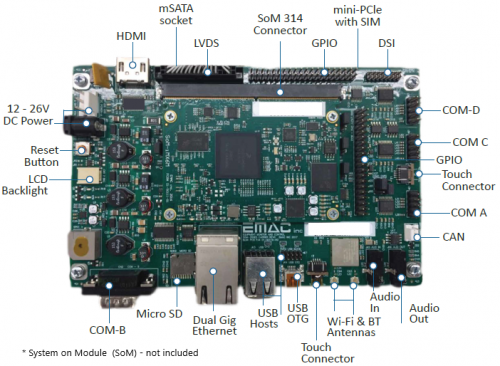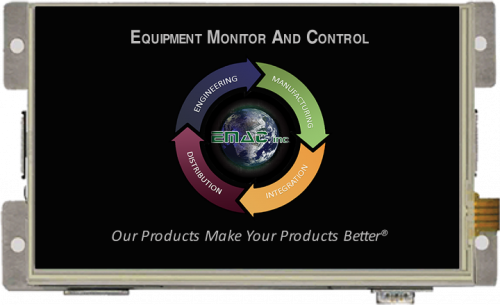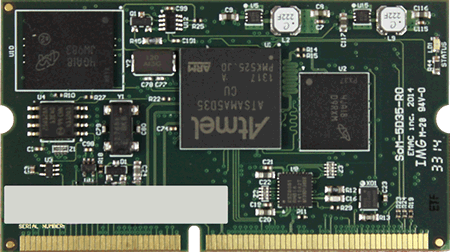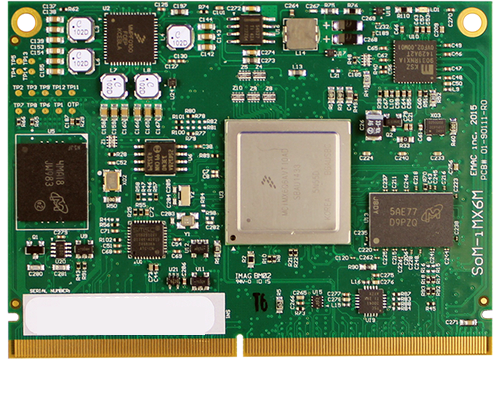Description
The SOM-5728M TI SOM ARM Cortex A15 Real-Time System on Module (SoM) based on the Texas Instruments AM5728 Dual-Core ARM Cortex A15 processor. This SOM-5728M SOM-5728M TI SOM ARM Cortex A15 Real-Time Multicore Application processor is the basis for our Computer-on-module. Designed and manufactured in the USA, this wide temperature, fanless ARM 1.5 GHz SoM has 2x 100-BaseT and a 1000 BaseT Ethernet included along with 4 serial ports. It utilizes up to 64GB of eMMC 5.1 Flash, up to 16MB of serial data flash, and up to 2GB of LP DDR3 RAM. A SoM is a small embedded module that contains the core of a microprocessor system.
- AM5728/AM5729 Dual-Core ARM Cortex A15 1.5GHz
- 2x Cortex M4 RT Cores at 213 MHz
- 1GB DDR3 RAM with up to 2GB optional
- 8 GB of eMMC Flash(up to 64 GB eMMC 5.1 optional), 16 MB Serial Data Flash
- HDMI & LVDS Video with Resistive Touch Controller
- 1x 1000 BaseT Ethernet and 2x 100-BaseT Ethernet ports
- 1x USB 3.0 Host, 2x USB 2.0 OTG Ports, SATA, 2x SDIO Ports
- 4x Serial Ports, A/D, 2x SPI, 2x I2C, 2x I2S, 2x CAN & 2x PCIe
AM572x Sitara™ processors are Arm applications processors built to meet the intense processing needs of modern embedded products.
AM572x devices bring high processing performance through the maximum flexibility of a fully integrated mixed processor solution. The devices also combine programmable video processing with a highly integrated peripheral set. Cryptographic acceleration is available in every AM572x device.
Programmability is provided by dual-core Arm® Cortex®-A15 RISC CPUs with Arm® Neon™ extension, and two TI C66x VLIW floating-point DSP core, and Vision AccelerationPac (the AM5729 adds 4x EVEs {Embedded Vision Engine}). The Arm allows developers to keep control functions separate from other algorithms programmed on the DSPs and coprocessors, thus reducing the complexity of the system software. While TIDL (Texas Instruments Deep Learning), a set of open-source Linux software packages and tools for executing deep learning models on TI embedded systems. TIDL provides the ability to offload deep learning compute-intensive workloads from the general-purpose ARM cores to the EVE (Embedded Vision Engine) cores and C66x DSP cores on the AM5729 Sitara processor. This can significantly speed up these types of workloads. TIDL also includes the Neo-AI-DLR (Deep Learning Runtime) an open-source common runtime for deep learning models and decision tree models compiled by TVM, AWS SageMaker Neo, or Treelite. TIDL requires pre-trained compiled models stored on the target device filesystem as training on the target device is not currently supported. TIDL and TVM are included in the Processor SDK software distribution. Also residing on the target are two trained MobileNetV2 neural network models, one compiled for the ARM general-purpose CPUs and the other for the EVE and C66x DSP hardware accelerators on the AM5729 Sitara processor.
Additionally, TI provides a complete set of development tools for the Arm and C66x DSP, including C compilers, a DSP assembly optimizer to simplify programming and scheduling, and a debugging interface for visibility into source code execution.
___________________________________________________________________________
EMAC is a global leader in system-on-module and carrier board embedded systems. The System on Module (SoM) is an ideal alternative to fully custom engineering of a board design. With the SoM approach, you get the best of aspects of both buying an Off-The-Shelf Embedded Single Board Computer (SBC) and a Custom Engineered solution. With Off-The-Shelf embedded components such as a generic carrier board and SOM module, it is possible to start development on your software applications before the custom carrier board solution is complete; thus offering a reduced time to market for your system. A System on Module (SoM) is comprised of a small processor module with CPU bus accessibility and standard I/O functionality. The SoM module does not have any connectorization and is designed to be plugged into a Carrier Board.
Interested in custom engineering? Learn more.
Search our video library.

